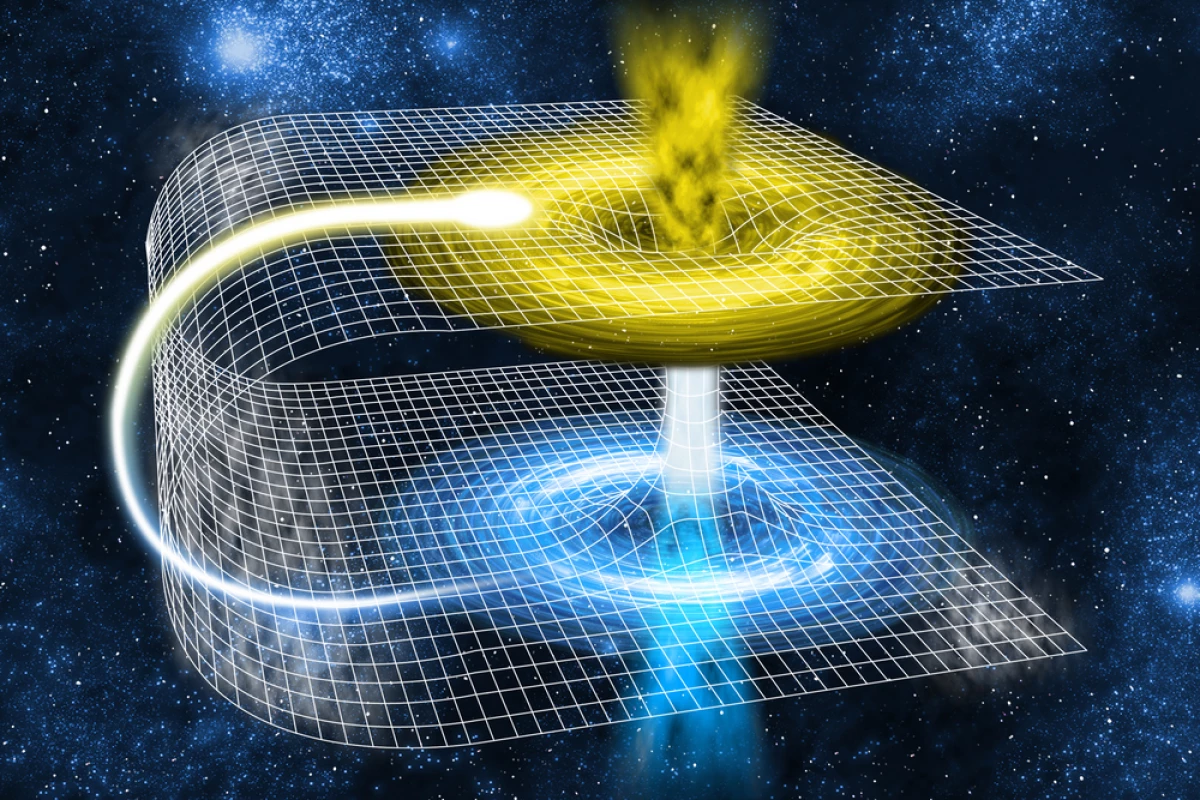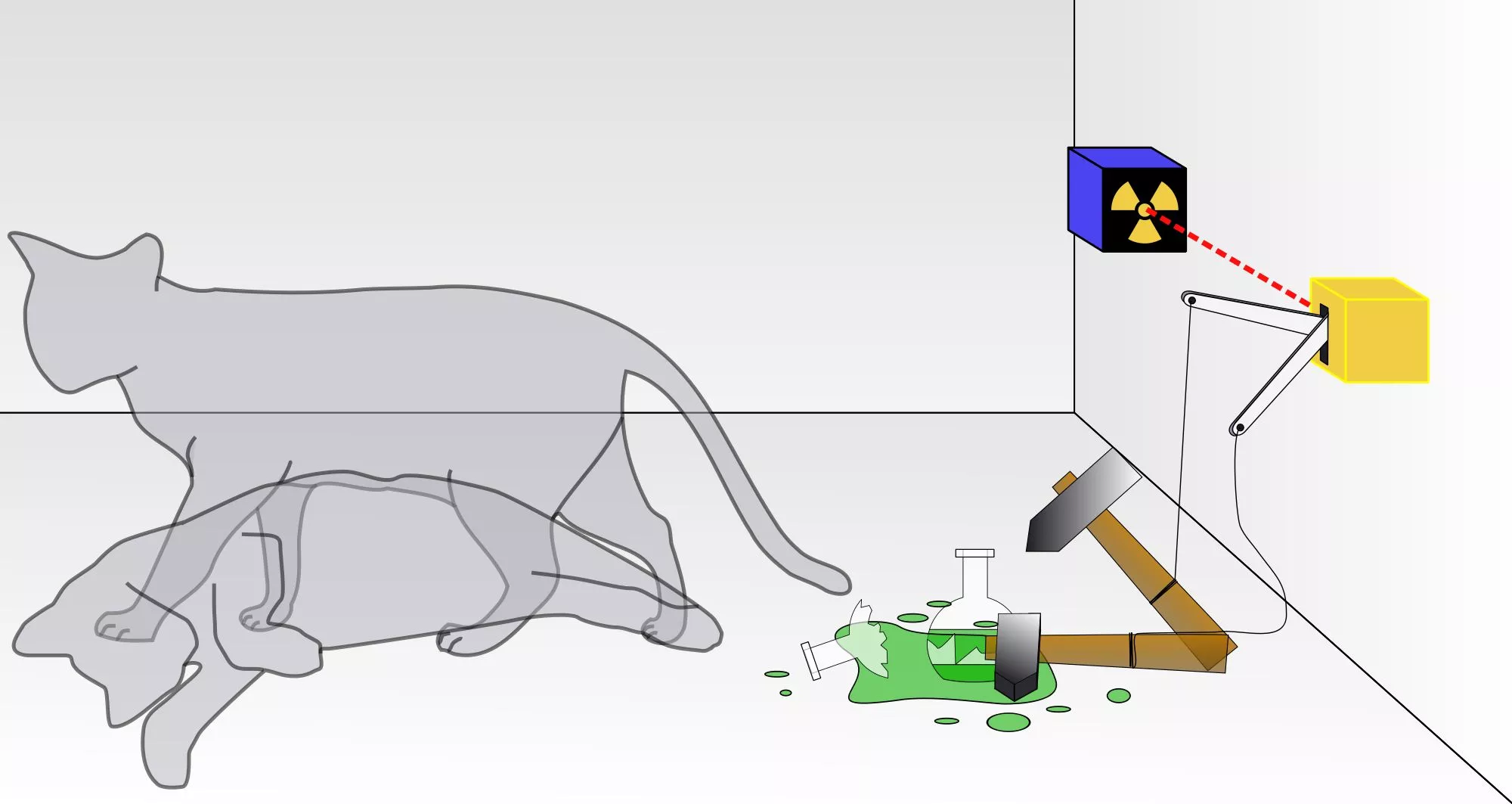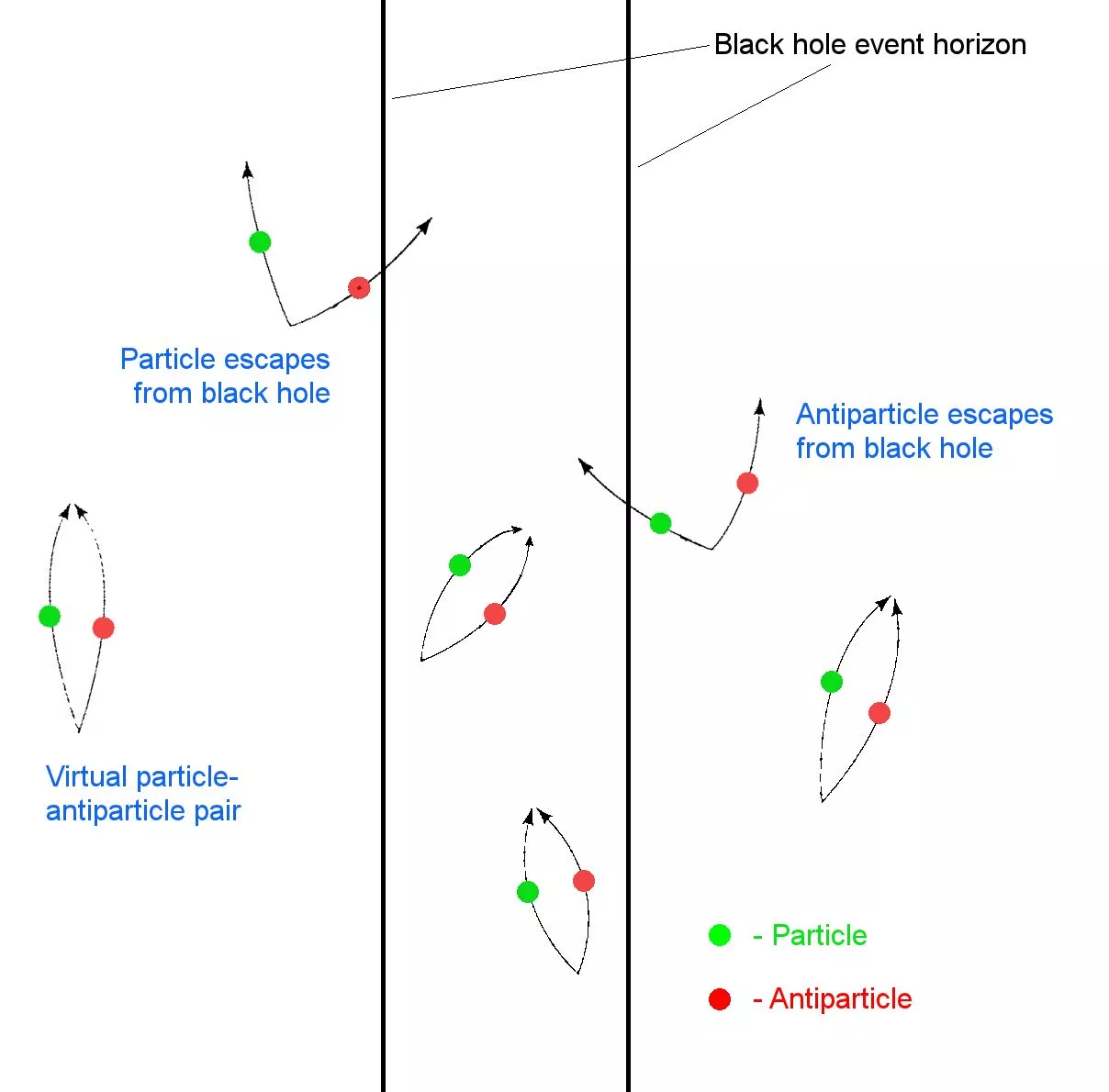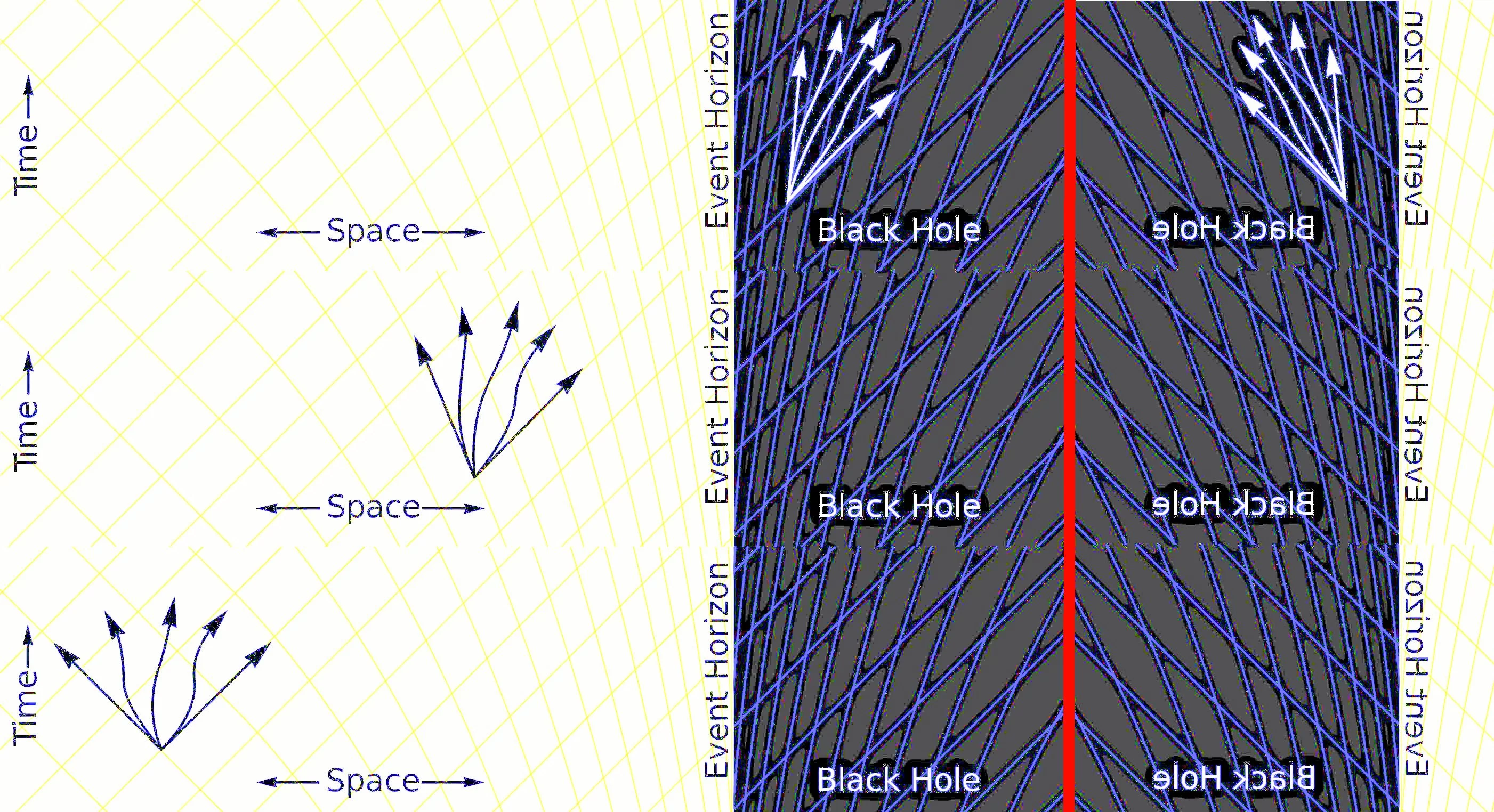Physicists have long thought that the singularities associated with gravity (like the inside of a black hole) should vanish in a quantum theory of gravity. It now appears that this may indeed be the case. Researchers in Uruguay and Louisiana have just published a description of a quantum black hole using loop quantum gravity in which the predictions of physics-ending singularities vanish, and are replaced by bridges to another universe.
Singularities, such as the infinitely strong crushing forces at the center of a black hole, in a physical theory are bad. What they tell you is that your description of the universe fails miserably to explain what happens as you approach the singularity. Tricks can sometimes resolve what appears to be singular behavior, but essential singularities are signs of a failure of the physical description itself.

General relativity has been summed up by the late John Wheeler's phrase: "Spacetime tells matter how to move, matter tells spacetime how to curve." Relativity is riddled with essential singularities, because gravity is both attractive and nonlinear – curvature in the presence of mass tends to lead to more curvature, eventually leading to trouble.
The result is rather similar to a PA system on the verge of producing a feedback whistle. If you whisper into the microphone (small gravitational fields) the positive feedback isn't enough to send the PA into oscillation, but talking at a normal volume (larger gravitational fields) produces that horrible howl. Whispering is the comparable to the familiar actions of gravity that keep the planets and stars in their courses. The howl is the process that eventually leads to a singularity as the end result of gravitational collapse.
Let's follow this analogy a bit further. On a PA system, the volume of the feedback is limited by the power capacity of the amplifier, so it can't reach truly destructive levels (other than to our eardrums.) However, gravity as described by general relativity doesn't have such a limit. Since gravity is always attractive, and eventually becomes stronger than all the (known) forces that normally give volume to matter, there is nothing to keep gravitational collapse from proceeding until the curvature of the spacetime tends toward infinity – i.e. a singularity.
Remember that this is the prediction of the classical theory of gravity, general relativity. Classical physical theories contain no fundamental limitation on mass-energy density or on the size of spacetime curvature. While this may be (and probably is) incorrect, we rarely run into a problem caused by this error, so have largely ignored the problem for centuries.
Then along came gravitational collapse and black holes. First proposed by geologist John Mitchell in 1783, a black hole is a region of spacetime from which gravity prevents anything, even light, from escaping.
Black holes are formed when large stars run out of fuel. When a star's core cools, the star shrinks. As the star's layers fall inward, they are compressed by the unbalanced force of gravity, and heat up until a new balance is established. This can only go on so long, as the star (on average) gets smaller at each step of the process of collapse. Eventually the heating driven by this gravitational collapse becomes too small to hold the star up.
At this point, the size of the star depends mostly on its mass, as the force of gravity is only balanced by the ability of the star's material to resist pressure. If a star is heavy enough (8-10 times the mass of our Sun), there is no known source of material pressure which is large enough to resist gravity. In that case, the star collapses without end, and forms a black hole, from which even light cannot escape.
Black holes really began to be understood in the late 1950s, when David Finkelstein, then a professor at the Stevens Institute of Technology, found that the odd behavior at the Schwartzchild radius was actually "... a perfect unidirectional membrane: causal influences can cross it but only in one direction." In other words, what falls into a black hole stays there.
In the spacetime diagram below, known as a causal diagram, the exterior and interior of a classical black hole are sketched. The yellow lines outside and the blue lines inside the black hole show the paths along which light travels. All particles have to follow slower paths that are sandwiched between these "light cones." The red line at the center of the black hole is a curvature singularity.

As you approach the black hole, gravity causes light and particles to curve toward the black hole, which is seen as tipping of the light cones (middle). At points inside the black hole (top), the light cone is tilted so that all light, and hence all particles, can only travel deeper into the black hole. Past the event horizon of a classical black hole, there is no escape.
At the center of a black hole, all matter and light are forced to move inward at ever increasing speeds. This forces whatever enters a black hole into a single point of space right at the center. This point exhibits infinite curvature, making it a curvature singularity. At that point, no known combination of conventional quantum mechanics and general relativity can tell us what happens to the matter and light - the theories break down.
Shortly after Finkelstein's work, Roger Penrose, Steven Hawking, and Robert Geroch showed that gravitational collapse is essentially always followed by formation of essential singularities, disappointing those who hoped that singularities only formed in highly symmetric geometries. As the prediction of a singularity tells you that your physics is wrong, this emphasized the need for a better theory of gravity.

Well, the other fairly comprehensive and insanely accurate description of what happens in the universe is quantum theory. Moreover, one might guess that quantum uncertanity and fuzziness might keep curvature singularities from occurring, so it seems reasonable to try to solve the limitations of general relativity by developing a quantum theory of gravity.
Easier said than done. Hawking radiation predicts that a black body radiation is emitted by black holes as a result of quantum effects taking place very near the event horizon, which immediately leads to a serious conflict between general relativity and quantum mechanics.

Roughly speaking, what happens is that a vacuum fluctuation near the event horizon produces a virtual particle-antiparticle pair. One of the pair falls into the black hole, and the other becomes real and escapes from the black hole, as the first cannot reemerge through the black hole to recombine with the first particle.
Here's the problem. When matter and light fall into a black hole, it appears that whatever information that matter and light may have carried along with them vanishes in the process. Indeed, the sum of all Hawking radiation emitted during the life of a black hole informs you of the mass, spin, and electric charge of what fell into the hole, but nothing else.
Unfortunately, one of the fundamental tenets of quantum mechanics is that information is never destroyed. It appears that the first "successful" result combining general relativity and quantum effects leads to a fundamental conflict. This difficulty is known as the black hole information paradox.
The model used to predict Hawking radiation is pretty simplistic, consisting of ordinary quantum field theory modified to work on a curved background space. The shape of this background space is fixed, so cannot change its shape in response to the movement of light and particles. This is an example of a semiclassical model. More sophisticated semiclassical models would allow small changes in spacetime geometry, but still essentially function in a fixed background geometry.
As more and more semiclassical research has been carried out in an attempt to get a handle on what a quantum theory of gravity might look like, more and more apparent paradoxes have appeared. We won't describe these, but they become increasingly unpleasant. It appears that believing the fundamental assumptions of general relativity leads almost inevitably to fundamental problems in quantum mechanics, and vice versa.
But we don't want to wait for a full quantum theory of gravity to investigate what happens at the center of a black hole. There isn't one in sight, although some version of string theory may be the best bet on the horizon. Instead, it might be reasonable to use a model, called loop quantum gravity, which treats spacetime as a fine structure woven of Planck-sized loops. In this description of physics, there is simply no concept of lengths smaller than the Planck length. While something of the sort is likely to be true in a full quantum theory of gravity, it is expected that this structure should emerge from the theory, rather than be made a basic assumption of the theory. Even though this model may not be a viable candidate for a full theory of quantum gravity, it might give some insight into what happens at the central singularity of a quantum black hole.
This brings us to the new work of Rodolfo Gambini and Jorge Pullin, recently published in Physical Review Letters. Gambini and Pullin have developed and solved the first well-behaved model of a quantum black hole, in which the central curvature singularity vanishes, and is replaced by a bridge that appears to lead into another universe. Other details of their treatment offer promise for reconciling other apparent paradoxes associated with blending general relativity and quantum mechanics. They are currently trying to extend their work to study of an evaporating quantum black hole.
Despite the limitations of this result, it is encouraging to know that the best model of a quantum black hole currently available appears consistent with what generations of physicists had hoped would be the case; that quantum effects prevent singularities.
Source: Loop quantization of the Schwarzschild black hole via ArXiv [PDF]








